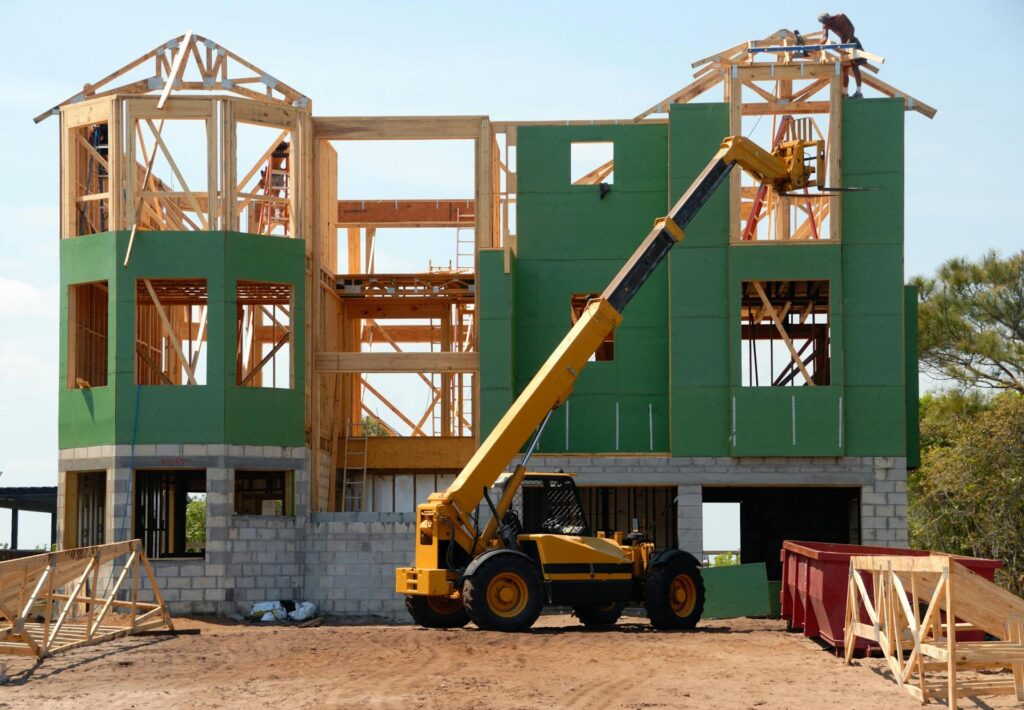The use of sustainable construction materials is of growing importance throughout the construction industry. Of course, consumers choosing “green” or “eco-friendly” appliances, lighting, and even solar power is important, but building from the ground up with a sustainable focus is even more impactful, and is increasingly what today’s home buyers want and expect.
Utilizing green building materials creates an opportunity for construction managers and their teams to not only conserve energy but also to reduce the need for replacements and improve overall occupant health. But, what type of sustainable construction materials exist and how can you incorporate them into your projects?
Types of Eco-Friendly Construction Materials
Sustainable construction materials are any type of building materials that are made of renewable materials and are environmentally responsible in the way they are produced and function. There are dozens of options on the market, and virtually any non-eco-friendly material can be improved upon based on sourcing. Here are some examples.
- Recycled steel: Less expensive and just as durable, recycled steel does not lose any of its properties when reused.
- Reclaimed wood: Aside from the aesthetic benefit, recalled or recycled wood ends are easy to use and the ideal component for indoor spaces. When purchasing new wood, select a product that comes from a sustainably managed forest.
- Bamboo: Noted for how quickly it grows and that it’s fully biodegradable and antibacterial, bamboo is an excellent choice for interior construction.
- Recycled plastics: This includes composites that use everything from plastic water bottles to other plastic waste to form virtually any plastic-made component for construction, from pipes to fixtures.
Other options include:
- Cork
- Cob
- Sheep’s wool
- AshCrete (made to replace concrete out of 97% recycled materials)
- Hempcrete (ideal for insulation
Advantages of Using Recycled and Locally Sourced Materials
Using recycled and locally sourced materials offers numerous benefits to any construction project. As noted by CalRecycle, there are numerous benefits:
- It helps to conserve energy. There’s no transportation cost involved over the long-haul.
- Lower costs due to limited transportation and less refinement or manufacturing.
- Greater design flexibility is possible in some products, allowing for just as much versatility as desired.
- Better choice for indoor air quality without toxins and pollutants.
- Keeps materials out of the landfill, which is directly impactful to the environment itself.
What Do You Need To Consider When Selecting Sustainable Materials?
While codes and local regulations are a factor, construction managers have outstanding options to choose from today to go a bit “green” on the building. However, they have to consider each product carefully to ensure it meets standards. When selecting materials, you should look for:
- Resource efficiency: Select materials that are, in some way, an efficient use of the resource. This could include choosing a natural and plentiful material, choosing recycled materials, or using salvaged or refurbished items instead of new ones. Choose products that are locally available.
- Impact on indoor air quality: When selecting construction materials, choose those that have a non-toxic or low-toxic makeup with minimal chemical emissions. Some of the best are also moisture-resistant.
- Efficient energy use: Choose building materials that reduce energy consumption in any way. This could include reducing the facility’s energy use.
Life Cycle Assessment and Environmental Impact Analysis
When choosing sustainable construction materials, an individual look at the product’s lifecycle is key. Many green materials are built to last, but others may require replacement sooner than traditional materials, but others do not. For example, cob, used as an organic exterior finish, can last hundreds of years. The use of some woods, on the other hand, may not last nearly as long in high-use areas or in climates where temperatures change frequently.
Also notable is completing an environmental impact analysis on any product considered. Think about:
- How accessible is the product
- How much of an impact does it have on the environment to source
- What type of environmental protections does it offer
- How does it impact productivity
- Does it impact the construction or design process
- How is the product placed
- How is the material recycled later
- How much reskilling is necessary within your workforce
Answering each of these questions allows construction managers to have a clear indication of just how beneficial any product is to their property.
Promote Sustainable Material Practices Throughout the Supply Chain
Construction managers also have the unique ability to encourage each of their suppliers to move towards environmentally friendly materials and methods. Choose suppliers who are more willing to find efficient and green strategies. That way, you can pass down that benefit to your consumers. Effective communication of your objectives can help in this way.
Takeaway: Recruit the Best Construction Staff Who Understand Sustainability with MRINetwork
Construction staff play an important role in promoting the use of sustainable construction materials. With more products available than ever and data readily available to support the move to sustainable products, construction managers should seek out the greenest method available when possible.
At MRINetwork, we work closely with clients who hope to remain leaders in the industry. Contact us today to discover how we can support your construction business with highly skilled talent.
